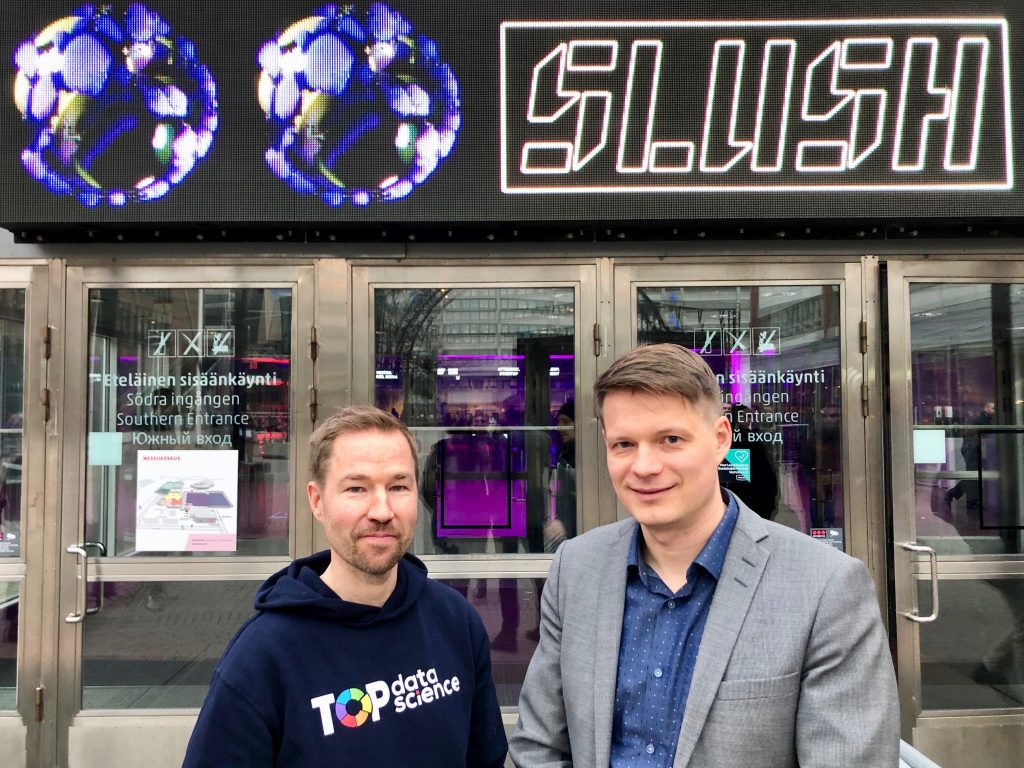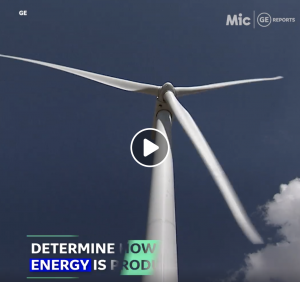This is how engineers at a NASA facility are testing the next generation of wind turbine blades.

December 5, 2019

IDEAS FROM THE SLUSH PILE
How is practicing medicine like being an accountant? Admittedly there aren’t a ton of similarities — but here’s one, and it involves artificial intelligence. A half century ago, the work of accountants required a lot of time-consuming data entry and analysis, whereas today’s CPAs have seen the most tedious parts of their jobs automated, freeing them to focus on the value-adding, interpersonal aspects. “I believe that AI will do the same for healthcare,” said Timo Heikkinen, who would know: He’s the co-founder of Top Data Science, a Finnish startup aiming to use the power unleashed by data and software to help doctors do their jobs better — track which patients in the intensive care unit, for instance, are likely to deteriorate. Heikkinen spoke recently at an event held in conjunction with the tech conference Slush — Finland’s answer to South by Southwest — where he was participating in a discussion on how AI can make healthcare more effective and efficient.
Vital signs of the times: Joining Heikkinen on the panel was Erno Muuranto, engineering director for mobile digital health and wearable monitoring at GE Healthcare. Muuranto and his colleagues have been working on wearable wireless monitors that stick to patients like Band-Aids and collect medical-grade data around the clock. Wireless monitors, and the machine learning software that analyzes the data they gather, won’t replace doctors as the final decision-makers, but could instead act as a kind of “early warning system” that enables physicians to focus on “more immediate issues,” Muuranto said. “The hope is that the doctor wouldn’t have to go through so much routine data, and could instead focus on findings or patterns that are out of the ordinary.”
In 2014, GE Healthcare leased a portion of its space to Health Innovation Village, an incubator hosting startups that could transform the medical industry, including Heikkinen’s Top Data Science. Learn more here.
THE NEED FOR SPEED
To many folks, the weekend will always seem too short — but it turns out there’s a lot you can accomplish in 48 hours. Just take it from a team of engineers in Hungary who recently spent 30 hours (not including an overnight rest) breaking down, transporting, rebuilding and restarting a power plant capable of supplying 9,000 homes. The machine in question? GE’s stalwart TM2500 gas turbine, the first version of which has been in commercial use since 2000. Roughly the size of a train car, the current edition of the unit is essentially a jet engine in a box, capable of delivering grid-level electricity very quickly. That compact, portable nature has rendered this mobile power plant especially useful in emergencies, such as disaster relief, when power is needed, and fast.
Let there be light: When a hurricane slammed the Mexican state of Baja California in 2014, Mexican officials deployed the TM2500 to work around parts of the grid too damaged to be repaired quickly — and it took just two weeks for the units to be delivered and powered up. More recently, after Hurricane Dorian leveled large portions of two of its islands, the Bahamas ordered a TM2500 to help in its recovery. “We get power to where it is needed very quickly,” said Nam Tran, GE product-line leader for the technology. “Because of all that speed, we can answer any demand that might come up. In emergencies, you don’t have time to build and ship.”
Tran’s team isn’t resting on its laurels, though — GE engineers are constantly looking for ways to make this fast and powerful marvel even speedier. Learn more here.
A BATTERY OF OPPORTUNITIES
“We can now say with confidence that the age of affordable battery technology is coming, and it’s happening faster than anyone expected,” said Madeline Tyson, the lead author of a new report boosting the benefits of battery tech. Tyson is a senior associate at the Rocky Mountain Institute, which released “Breakthrough Batteries: Powering the Era of Clean Electrification” in late October. The report finds that the rise in demand for electric vehicles, grid-level storage and other renewable applications is “fueling the cycle of investment” in battery technologies — to the tune of $1.4 billion in the first half of 2019 alone. Add to this the declining cost of battery storage and the stage is set for “mass adoption,” RMI concludes: The group sees a “seismic shift in how we will organize energy systems as early as 2030.”
Storage units: Battery storage is a crucial bridge to the renewable future. It’ll ensure that we maintain access to power generated by sun and wind, for instance, even after the sun’s stopped shining and the wind’s stopped blowing. The RMI report foresees the adoption of battery storage not just in established markets like electric vehicles, but for new applications including heavy trucking and short-range aviation. GE Renewable Energy has long recognized which way the wind is blowing, as it were: It recently launched a business unit called Renewable Hybrids, which works with utilities and developers to create hybrid power networks that combine renewable sources with next-gen technology like the GE Reservoir, a grid-scale system that can store enough juice to power 145 U.S. homes for a day.
Click here for more sunny projections from the Rocky Mountain Institute on the future of battery storage.
— VIDEO OF THE WEEK —
— QUOTE OF THE DAY —
“In hospital care, a lot of the time of the nurses and doctors goes to entering and interpreting data. We are building systems that are more intelligent with the goal of starting to reverse that trend, help them get focused on what’s important or unusual, spend more time with the patient and improve treatment.”
— Erno Muuranto, engineering director for mobile digital health and wearable monitoring at GE Healthcare
Quote: GE Reports. Image: Tomas Kellner for GE Reports.
ENJOY THIS NEWSLETTER?
Please send it to your friends and let them know they can subscribe here.





